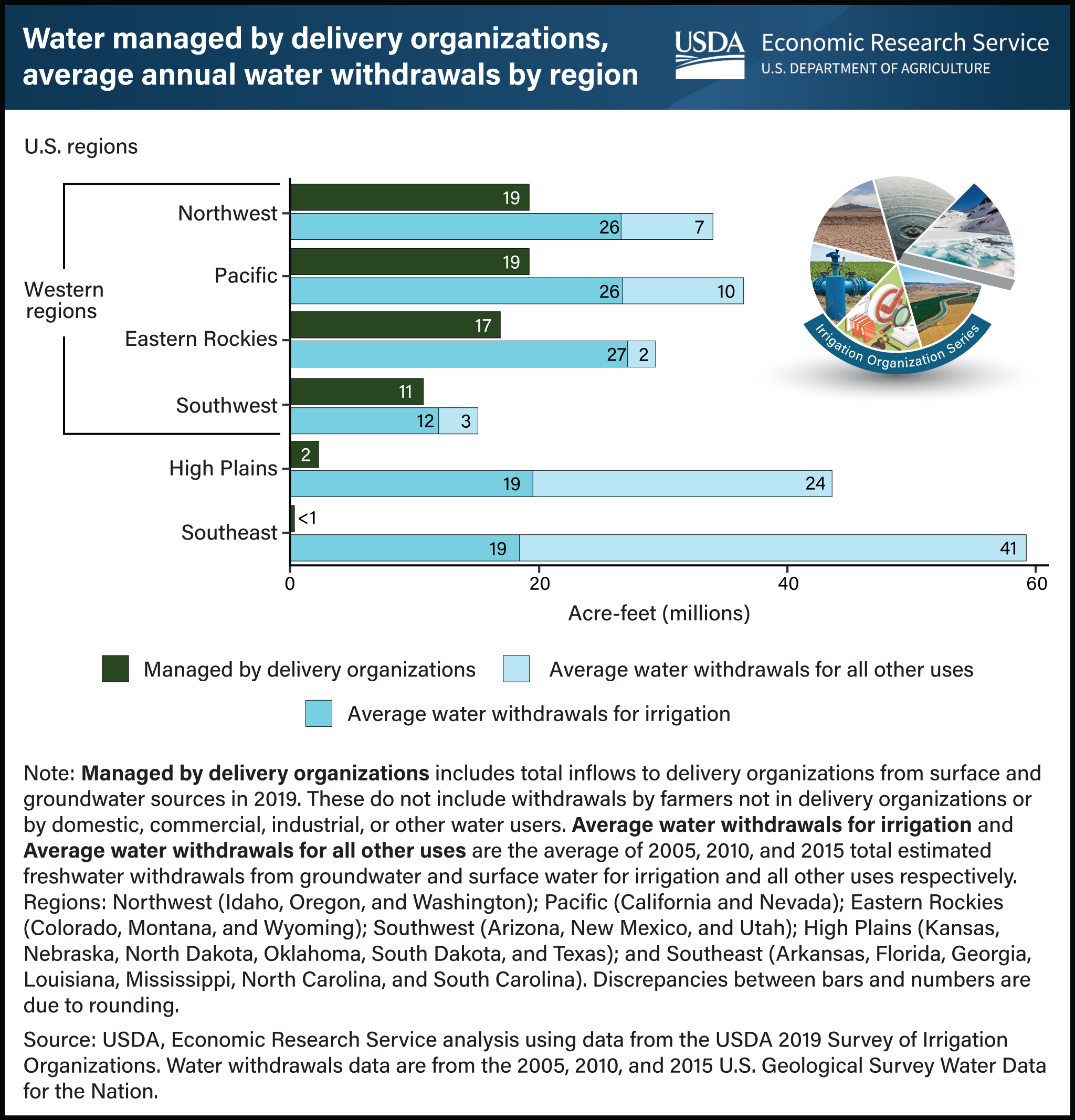Irrigation water delivery organizations play important role in conveying water in the western United States
- by Nicholas Potter, R. Aaron Hrozencik and Steven Wallander
- 9/5/2023

Water is withdrawn from surface and groundwater sources for agricultural, industrial and municipal use. Farmers in the United States source water for irrigation by diverting it from on-farm surface water bodies like rivers or streams, directly pumping groundwater, or receiving water via the canals and ditches of water delivery irrigation organizations. In the four regions of the western United States (consisting of the Northwest (Idaho, Oregon, and Washington), Pacific (California and Nevada), Southwest (Arizona, New Mexico, Utah), and Eastern Rockies (Colorado, Montana, Wyoming) regions) irrigation water delivery organizations accounted for almost 60 percent of the water that is withdrawn for all uses in an average year. In contrast, in the High Plains (Kansas, Nebraska, North Dakota, Oklahoma, South Dakota, and Texas) and Southeast (Arkansas, Florida, Georgia, Louisiana, Mississippi, North Carolina, and South Carolina), where surface and ground water resources for irrigation are available without large-scale coordination, these organizations conveyed water that amounted to about 3 percent of all water withdrawn in an average year. Irrigation water delivery organizations play a particularly large role in the Southwest, where in 2019 they conveyed 11 million acre-feet of water, which is 73 percent of the 15 million acre-feet withdrawn for all uses in an average year. This chart appears in the ERS report Irrigation Organizations: Water Inflows and Outflows, published in August 2023.

